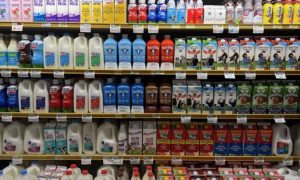
Argentina’s economic crisis and its impact on the domestic dairy industry, along with its export competitiveness, is the headline for the US Department of Agriculture’s Foreign Agricultural Service (USDA FAS) latest dairy world markets and trade report. The South American country has seen its inflation rate for food and non-alcoholic beverages seeing increases of just over 300% at the beginning of 2024. This has now decreased somewhat.
To support the dairy sector, the government has introduced several measures, including reopening agricultural export registrations to boost exports and generate foreign currency revenue. Overall, its cow milk production has dropped by 7.4% to 10.8 million tons, which has meant a rapid recovery in domestic milk prices, but a decline in consumption of 7% for 2024 estimated. Its exports have been helped by the currency devaluation, with dairy export volumes increasing by 10% in the first five months of 2024, versus the same timeframe in 2023. The question for Argentinian processors now is whether to serve the volatile domestic market, or aim for more profitable exports, the FAS says.
Meanwhile, in Australia, milk production is estimated to be up by 3.5%, to 8.8 million tons. The country is seeing rising domestic milk prices, as well as export demand from Asia for dairy products. The stability of its dollar has also kept the export prices competitive, according to the FAS.
Over in the EU, milk production is static, although the herd population has dropped below 20 million, due to lower milk prices and elevated production costs. Environmental policies such as nitrogen emission reductions in the Netherlands, are also playing a part in lowering milk production, the FAS reports.
In New Zealand, a slight 0.7% decrease in fluid milk production is predicted, to 21.1 million tons. Financial strains due to higher interest rates, along with higher inputs, are causing concerns, but the sector continues to invest in processing capacities. About 95% of the country’s production is exported, and in January, the final import duties covered in the New Zealand-China Free Trade Agreement were reduced to zero. Global export volumes are up 5% so far in 2024, with more diverse products being sent abroad.
Interestingly, New Zealand cheese exports have dropped by 6%, while Australia’s exports have grown by 28% YOY and both the UK and US have seen increases of 12% and 17% versus 2023, respectively. That being said, the EU remains the largest exporter of cheese with a 1% uptick seen this year, at 1.4 million tons in 2024. Its production will increase by about 1% to 10.5 million tons. Tourism and hospitality is contributing to upward consumption within the EU.
Australia’s cheese production is estimated to be 435,000 tons, and around 380,000 of that is consumed in the country. The exports are mainly sent to Japan, China and other southeast Asian countries.
In the US, the FAS is predicting a record-breaking year for the country’s cheese exports, to 466,000 tons, up 8% from 2023.
Individual FAS country reports covering dairy are available at: https://gain.fas.usda.gov/#/ The USDA Production, Supply and Demand database is available at: https://apps.fas.usda.gov/psdonline/app/index.html#/app/home
You can now read the most important #news on #eDairyNews #Whatsapp channels!!!
🇺🇸 eDairy News INGLÊS: https://whatsapp.com/channel/0029VaKsjzGDTkJyIN6hcP1K























